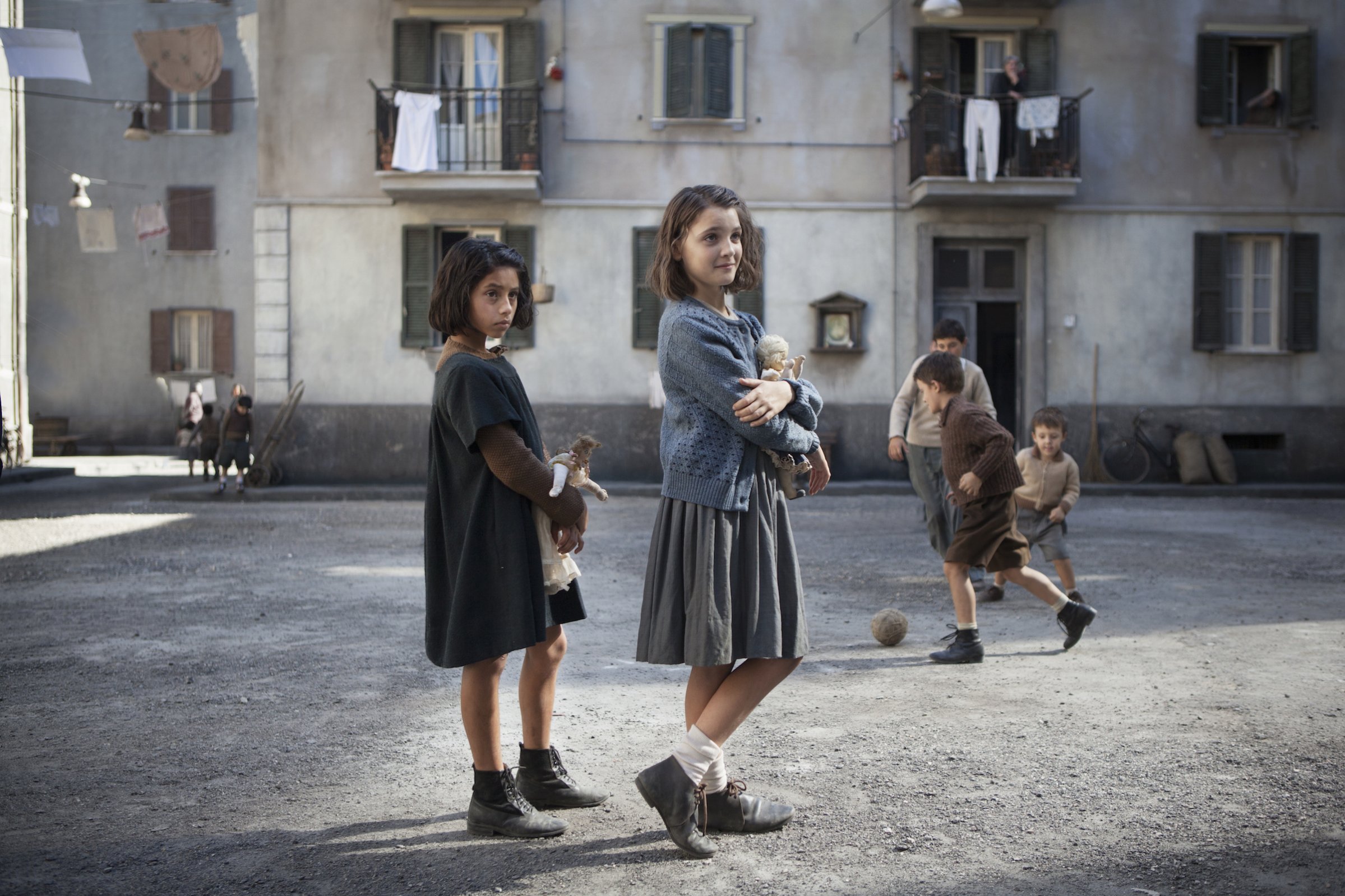
Elena Ferrante’s Neapolitan novels, which have sold 2 million copies worldwide and will debut as an HBO series on Sunday, have won praise as a sensitive portrait of female friendship, but they’re also a modern historical epic, beginning in the 1950s and spanning 60 years. And though its protagonists are the friends Elena and Lila, another group of characters shapes their home of Naples, Italy, and their lives: the Camorra, a shadowy organized crime group that gradually rises to control Neapolitan business, politics and people.
In real life, the Camorra — Naples’ version of the mafia, a term that technically only refers to organized crime groups in Sicily — has a history going back centuries, says John Dickie, a Professor of Italian Studies at University College London and the author of Mafia Republic and Blood Brotherhoods, which tell the story of Italy’s organized crime networks.
“The modern Camorra has its roots in Southern Italy’s prison system in the 1800s,” he tells TIME. The region that now comprises Italy had long been a diverse collection of city states and republics. Its unification into a country in 1861 was accompanied, unsurprisingly, by massive political upheaval — and thus opportunity for criminals. As members of gangs that had been formed behind bars left prison, they found they could easily gain influence in Naples and across the region of Campania. These early Camorra gangs sponsored candidates in local elections and got rich by extorting money from communities and carrying out highway robberies.
The etymology of the term Camorra is disputed, but some historians say it comes from “morra” — a once-popular gambling game — and “capo”, meaning a chief or boss, and originally referred to money taken by the bosses who oversaw the game.
Successful anti-Camorra campaigns by Italy’s governments drove the group to the sidelines in the early years of the 20th century. In the 1920s they were targeted, along with the rest of civil society, in a crackdown on dissent by the fascist regime of Benito Mussolini. In 1930, TIME wrote that “the atheistic, anarchistic Camorra has been theoretically wiped out.”
One notorious episode, though, hints at the group’s ability to survive — and at the explosive rise they were about to enjoy in the later half of the century.
In 1943, when the Allies invaded Italy during World War II, the U.S. made deals with organized-crime bosses in both Sicily and Naples, asking them to provide intelligence and protect American shipyards. Even before the war, Naples had been one of Italy’s poorest city’s, suffering decades of chronic under-investment from central government. Then, dozens of bombing campaigns wiped out infrastructure and supply lines, leaving the population desperate. The Camorra rose to the occasion, helping to establish a vast black market for food and other goods. “You had American quartermasters colluding with the Camorra, and a huge amount of military materials went missing,” says Dickie.
By the time Ferrante’s story begins in 1950, the gangs were thriving in working class neighborhoods like the Rione Luzzatti, where many have speculated that the novel is set. But in the city as a whole, they remained “a pretty subdued force,” Dickie says. “The media never even talked about them.”
That changed in the mid-1950s, partly thanks to Assunta Maresca. A beauty queen turned Camorra wife, in 1954 she shot Camorra boss Tony Esposito in broad daylight in a town just south of Naples. Maresca, who was pregnant at the time and was avenging her husband’s murder by Esposito’s forces, made headlines around the world. Italian media dubbed her “Pupetta” or “Little Doll.”

Neapolitans “hailed Pupetta as a worthy descendant of the old Camorra — the ‘honor societies’ hired by noblemen to settle their differences by duels and vendettas,” TIME noted, reporting on her trial in 1958. “Certain puzzling things about the case, e.g., the fact that 29 bullets were found in Tony Esposito’s body and that Little Doll’s brother who was with her at the time, had vanished, did nothing to impair the sympathy.”
Pupetta’s trial gave the world a glimpse into a shady world that was about to explode in size. In the late 1960s and ’70s, Naples became a center for the international tobacco smuggling business, with camorristi turning over today’s equivalent of roughly $215 million a year in illegal cigarettes by the 1970s, according to Blood Brotherhoods. The trade employed between 40,000 and 60,000 people in Campania, boosting the Camorra’s influence, along with its profits.
Dickie says the Camorra differed from their organized crime counterparts, the Mafia in Sicily and ‘Ndrangheta in Calabria, in their fragmented structure. “The Camorra didn’t work together under one umbrella,” he says. “You had a lot of distinct, small gangs, competing for territory.” For the communities caught in the cross-hairs in Camorra territory, that meant “a very high level of day-to-day violence,” he adds.
And the Camorra’s power kept growing. As the international drug trade arrived in Europe in the late 1970’s, camorristi began converting their cigarette-smuggling routes into more lucrative cocaine and heroine operations. In 1980, a 6.9-magnitude earthquake leveled much of the Campania region. (Ferrante portrays its “infinite destruction” in the final installment of her series, The Story of the Lost Child.) Crime bosses used the opportunity both to siphon away state relief funds and to join the construction business, entwining their interests with those of legitimate politicians.
But with great power, came still greater violence, Dickie says.
“By the early 1980s, the level of violence from organized crime in Italy had grown really staggering,” he says. Major political figures and anti-Camorra judges were being assassinated. And an attempt to unify the Camorra under a single boss, Raffaele Cutolo, caused unprecedented bloodshed when it collapsed into civil war. “There were points when southern Italy was on the verge of becoming a narco-state.”
Civil society was driven to take action. Investigations into the Camorra and the Sicilian mafia brought waves of arrests in the 1980s and 1990s, both of crime bosses and corrupt politicians. Several prominent figures were arrested, including Francesco Schiavone, a Camorra boss who was captured in 1998 when police found him holed up in a secret apartment behind a wall in his Naples villa. But the crackdown did not end organized crime in Naples. “You can’t really cut the head off the Camorra, because it doesn’t have one,” Dickie says.
The arrests created power vacuums, prompting new generations to take over — and the history has continued well past the end of the time period covered by Ferrante’s novels.
The Camorra’s hand in daily life continued to be felt in Naples, most notably during the city’s decidedly un-glamorous trash crisis. After the Camorra branched out into the waste-removal business in the 1990s, bags of toxic trash have intermittently been dumped on city streets and public spaces. City authorities struggled to get a hand on the situation until 2012 and flare-ups continued. Today, Dickie says, the Camorra is mostly visible in the form of young drug dealers who lounge on scooters in the streets.
“You’ve got to understand that the poor quarters of Naples haven’t been yuppified like city centers in the U.S. and the rest of Europe,” Dickie says, noting that these are neighborhoods that have been poor for centuries, not decades. “That’s the water the Camorra swims in. Their power is deeply, deeply embedded.”
More Must-Reads from TIME
- Cybersecurity Experts Are Sounding the Alarm on DOGE
- Meet the 2025 Women of the Year
- The Harsh Truth About Disability Inclusion
- Why Do More Young Adults Have Cancer?
- Colman Domingo Leads With Radical Love
- How to Get Better at Doing Things Alone
- Michelle Zauner Stares Down the Darkness
Write to Ciara Nugent at ciara.nugent@time.com